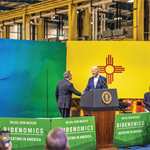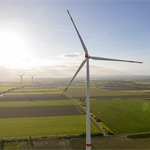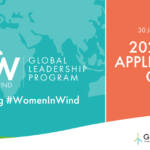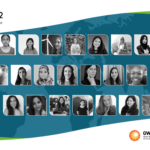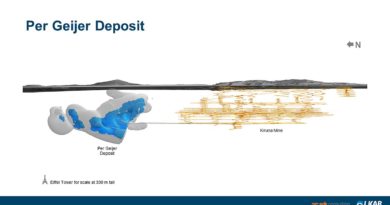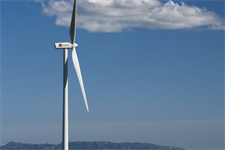Women in Wind: Gender diversity must be a priority in the wind sector for a just recovery
Energy Disrupter

- The Women in Wind Global Leadership Program, a joint initiative of the Global Wind Energy Council and the Global Women’s Network for the Energy Transition, has released a guide on Best Practices for Gender Diversity in Talent Recruitment as a resource to advance gender equality in the wind industry.
- The guide aims to support employers in clean energy in adopting a diversity lens to strengthen their hiring practices, and ultimately increase the dynamism and competitiveness of their workforce.
- As more renewable energy jobs will be created in the coming years on the path to a green recovery from the COVID-19 crisis, gender diversity must be a priority to ensure a just recovery that attracts top talent, innovation and skills to drive the global energy transition.
- Women represent only 21 per cent of the global wind workforce and only 8 per cent of its senior management, according to a 2020 report by IRENA and the Women in Wind Global Leadership Program.
Brussels, 18 August 2020 – As governments around the world seek a green recovery from the COVID-19 crisis and look to invest in job creation in wind and renewable energy sectors, gender diversity must be prioritised to ensure a just recovery. To support this effort, the Women in Wind Global Leadership Program, a joint initiative of the Global Wind Energy Council (GWEC) and the Global Women’s Network for the Energy Transition (GWNET), have released a guide on Best Practices for Gender Diversity in Talent Recruitment. This guide serves as a resource to advance gender equality in the wind industry and attract top talent and skills with the end-goal of building a dynamic and inclusive workforce that can drive the global energy transition.
A 2020 report by IRENA and the Women in Wind Global Leadership Program shows that women represent only 21 per cent of the global wind energy workforce, and only 8 per cent of its senior management. The newly released guide aims to support employers in the wind sector to integrate diversity and inclusion principles into their hiring practices, and combat inequalities in talent recruitment, representation, pay and advancement. Rather than providing a set of hard rules, the guide outlines broad recommendations that can be adapted to job requirements and local market contexts, to create more diverse and inclusive workplaces.
The guide focuses on three key areas: inclusive recruitment; inclusive application and selection processes; and diverse workplaces. Recommendations include:
- Re-considering workforce representation at recruitment forums.
- Employing targeted outreach and encouraging employee referrals.
- Standardising and diversifying shortlist selection processes.
- Supporting diversity during the interview process.
- Implementing wider diversity policies, such as collection of gender-disaggregated data, merit-based promotion, and equal pay.
Joyce Lee, GWEC Policy and Operations Director said: “The wind industry’s talent recruitment and hiring practices should reflect wind energy’s role in driving sustainable and inclusive growth around the world. According to IRENA, every $1 million invested in renewables for a green recovery could generate at least 25 jobs – as governments make smart investments in clean energy, the sector must make its own smart investments. That means tapping into the widest pool of human talent which can hone our industry’s competitiveness and place wind energy at the forefront of innovation”.
Christin Lins, Co-Founder and Executive Director of GWNET commented: “Inclusive recruitment practices are key to ensuring greater participation of women in the energy sector, and in turn, promoting the valuable diverse perspectives and skills necessary for the energy transition to succeed. As we make the push to build back better in the wake of the COVID-19 pandemic, we hope that this guide can act as the foundation for more inclusive, sustainable, and diverse workforces.”
Mary Thorogood, Women in Wind Mentor and Senior Specialist, Strategy and Business, GSR Business Development at MHI Vestas added: “A more diverse workforce will accelerate progress and innovation at a time when the wind industry has a vital role to play in driving green economic recovery globally. Integrating diversity and inclusion principles into companies’ recruitment, career development and succession planning processes will have a huge positive impact on their ability to compete and lead the way towards a more sustainable and resilient future.”
This guide belongs to a series of Best Practices guides and resources published by the Women in Wind Global Leadership Program to advance the role of women as agents of change in society and the energy transition. The full guide can be downloaded here.
About the Women in Wind Global Leadership Program
Women in Wind Global Leadership Program was launched in April 2019 by the GWEC and GWNET to advance the role of women as agents of change in society and the energy transition, and to promote best practices within the wind industry. The program is designed to accelerate the careers of women in the wind industry, to support their pathway to senior leadership positions and foster a global network of mentorship, knowledge sharing and empowerment.
About the Global Wind Energy Council (GWEC)
GWEC is a member-based organisation that represents the entire wind energy sector. The members of GWEC represent over 1,500 companies, organisations and institutions in more than 80 countries, including manufacturers, developers, component suppliers, research institutes, national wind and renewables associations, electricity providers, finance and insurance companies.
More: www.gwec.net
About the Global Women’s Energy Transition (GWNET)
GWNET empowers women in energy through interdisciplinary networking, advocacy, training, coaching and mentoring.
GWNET seeks to address the current gender imbalances in the energy sector and to promote gender-sensitive action around the energy transition in all parts of the world.
More: www.globalwomennet.org



